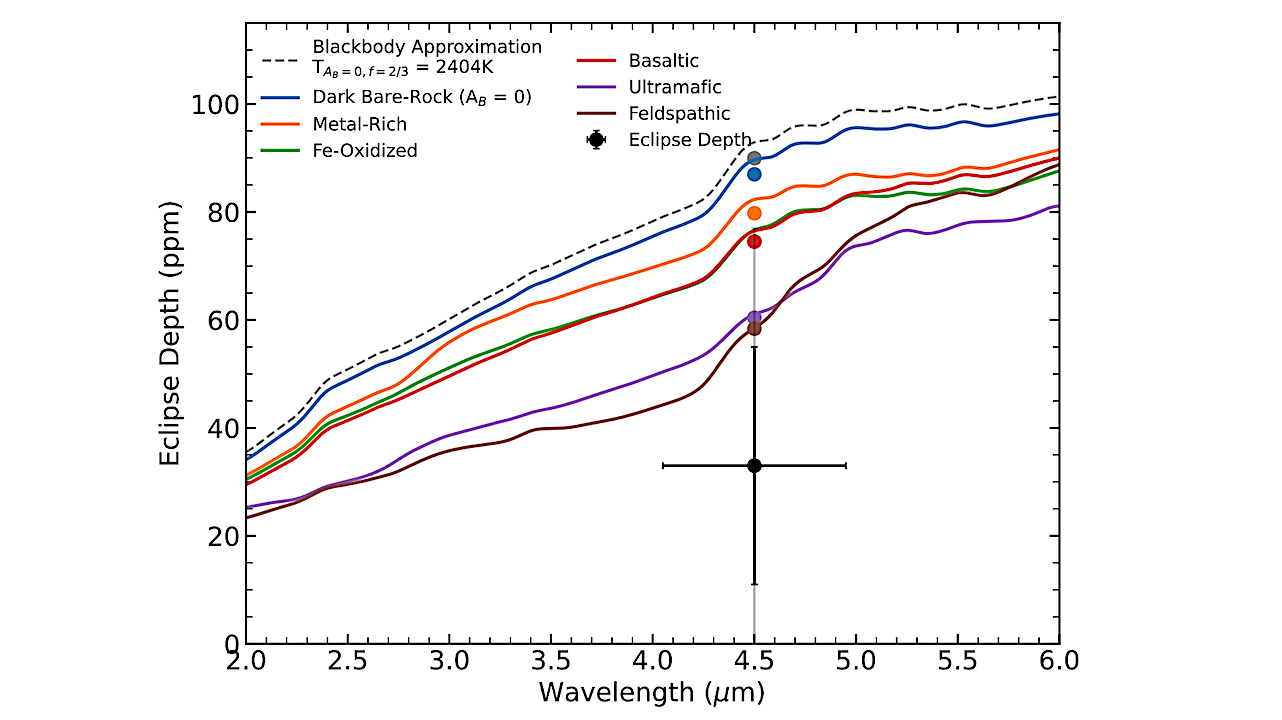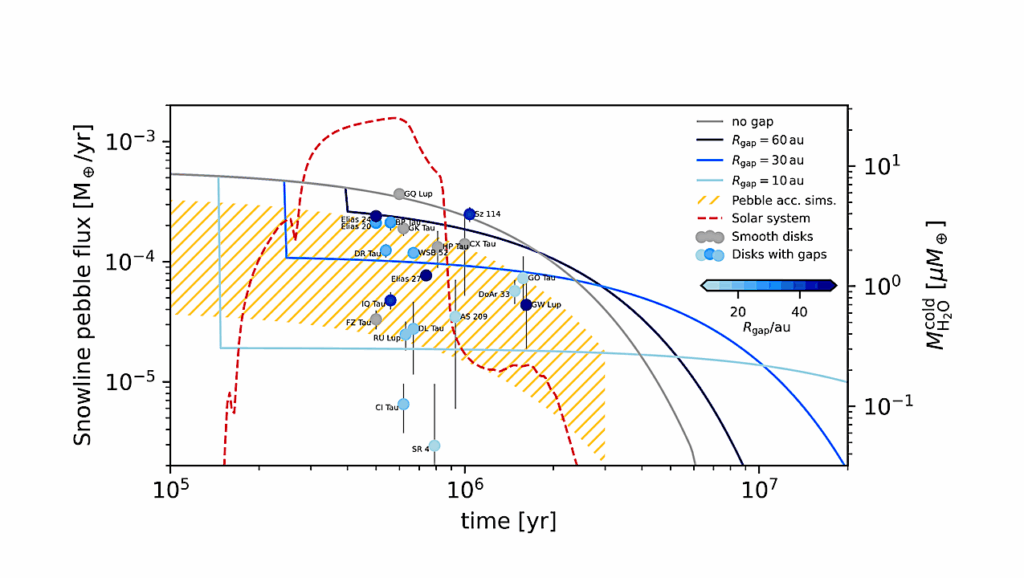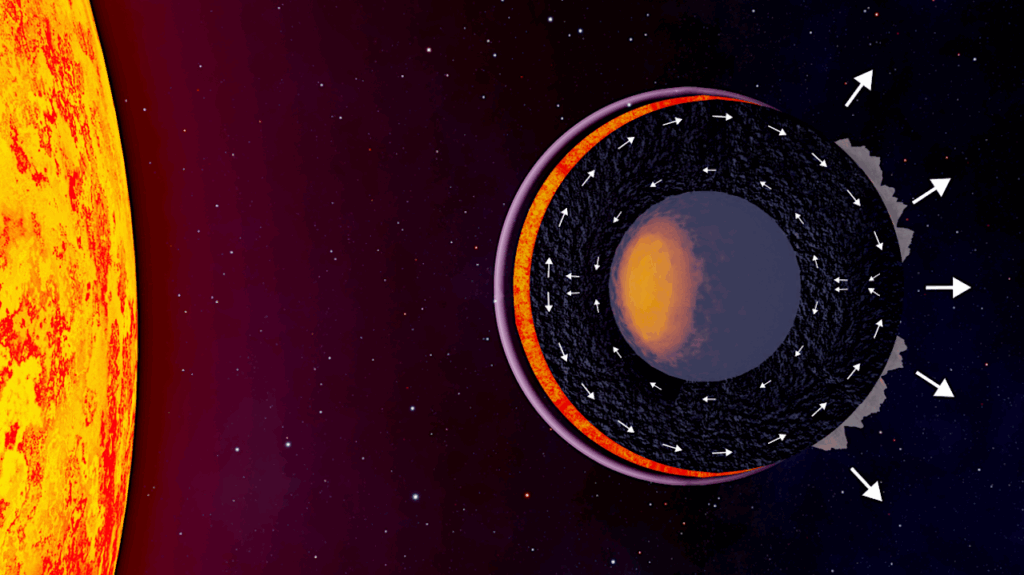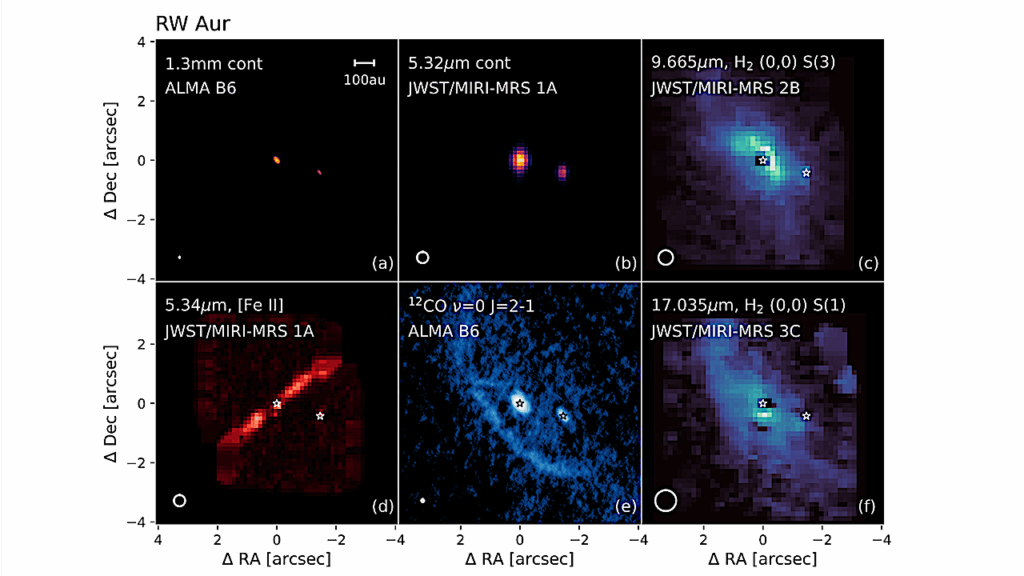Low 4.5 μm Dayside Emission Disfavors A Dark Bare-Rock Scenario For The Hot Super-Earth TOI-431 b

The full range of conditions under which rocky planets can host atmospheres remains poorly understood, especially in the regime of close-in orbits around late-type stars. One way to assess the presence of atmospheres on rocky exoplanets is to measure their dayside emission as they are eclipsed by their host stars.
Here, we present Spitzer observations of the 4.5 μm secondary eclipses of the rocky super-Earth TOI-431 b, whose mass and radius indicate an Earth-like bulk composition (3.07 ± 0.35 M⊕, 1.28 ± 0.04 R⊕). Exposed to more than 2000 times the irradiation of Earth, dayside temperatures of up to 2400K are expected if the planet is a dark bare-rock without a significant atmosphere. Intriguingly, despite the strong stellar insolation, we measure a secondary eclipse depth of only 33 ± 22 ppm, which corresponds to a dayside brightness temperature of 1520+360−390K.
This notably low eclipse depth disagrees with the dark bare-rock scenario at the 2.5σ level, and suggests either that the planet is surrounded by an atmosphere, or that it is a bare-rock with a highly reflective surface. In the atmosphere scenario, the low dayside emission implies the efficient redistribution of heat to the nightside, or by molecular absorption in the 4-5 μm bandpass.
In the bare-rock scenario, a surface composition made of a high-albedo mineral species such as ultramafic rock can lead to reduced thermal emission consistent with low eclipse depth measurement. Follow-up spectroscopic observations with the James Webb Space Telescope hold the key to constraining the nature of the planet.
Christopher Monaghan, Pierre-Alexis Roy, Björn Benneke, Ian J. M. Crossfield, Louis-Philippe Coulombe, Caroline Piaulet-Ghorayeb, Laura Kreidberg, Courtney D. Dressing, Stephen R. Kane, Diana Dragomir, Michael W. Werner, Vivien Parmentier, Jessie L. Christiansen, Farisa Y. Morales, David Berardo, Varoujan Gorjian
Comments: 14 pages, 5 figures, accepted for publication in The Astronomical Journal
Subjects: Earth and Planetary Astrophysics (astro-ph.EP)
Cite as: arXiv:2503.09698 [astro-ph.EP] (or arXiv:2503.09698v1 [astro-ph.EP] for this version)
https://doi.org/10.48550/arXiv.2503.09698
Focus to learn more
Submission history
From: Christopher Monaghan
[v1] Wed, 12 Mar 2025 18:00:02 UTC (359 KB)
https://arxiv.org/abs/2503.09698
Astrobiology








